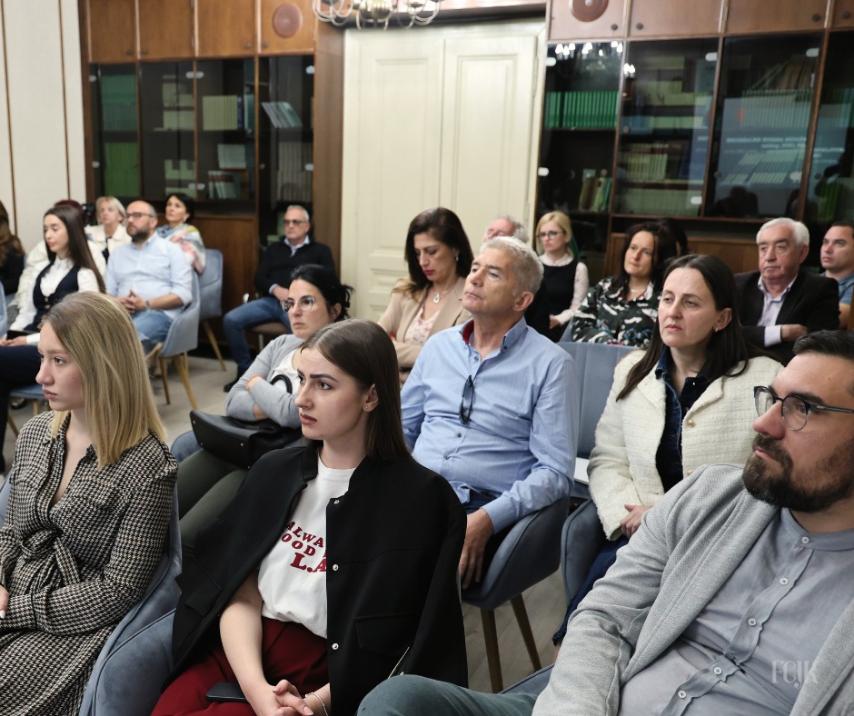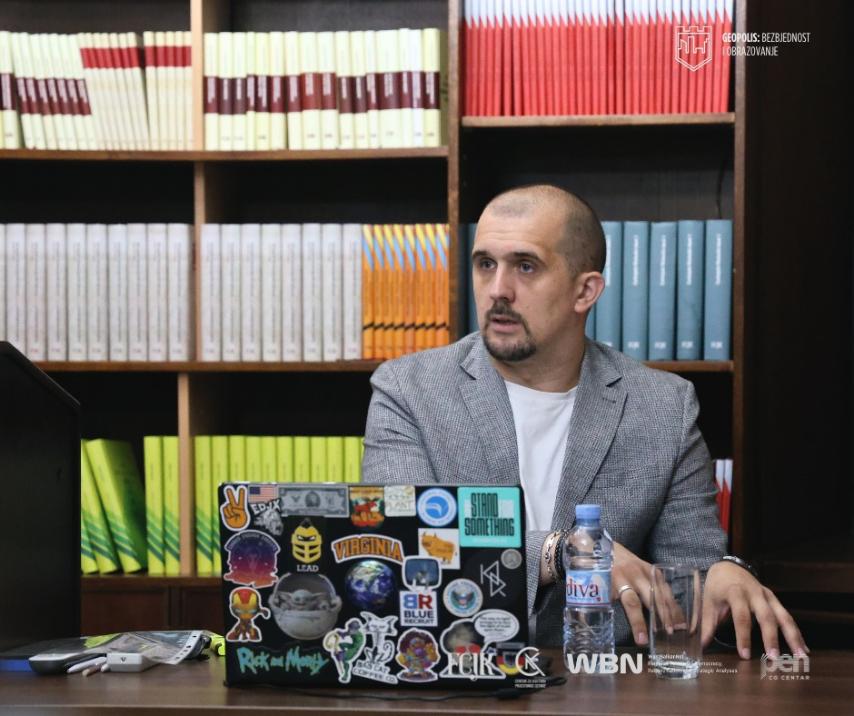Topic: European Right and Montenegrin Reality
Lecturer: Emir Pilav, MSc
Place and Date: Faculty of Montenegrin Language and Literature, Cetinje, May 28, 2025
Organizers: Faculty of Montenegrin Language and Literature, Cultural Center of the Royal Capital of Cetinje, WBN – Regional Forum for Democracy, Reconciliation and Strategic Analyses, Montenegrin PEN Center
Within the project: „Geopolis – Security and Education“
Lecture Content
The lecturer presented an analytical overview of the genesis and rise of the European right, with a particular focus on its conceptual differentiation between Euroscepticism and Europessimism. This distinction served as a framework for examining the political and ideological processes in EU countries that are increasingly shifting toward right-oriented paradigms, often driven by narratives about the crisis of the European project, sovereigntism, anti-immigration policies, and identity polarization.
Mr. Pilav went on to transpose the aforementioned processes onto the Montenegrin political and social context. It was assessed that the influence of the European right on Montenegro is not the result of sudden political shifts, but of gradual and systematically directed action, which became particularly intensified after the 2020 parliamentary elections. The change of government during that period, although democratically legitimized, marked the beginning of regressive social trends and the gradual weakening of Montenegro’s civic and European identity.

Key Arguments and Observations
1. Connection with Regional Centers of Power
The lecturer particularly emphasized the importance of political and ideological ties between certain political entities in Montenegro and centers of power in the region, primarily in Serbia. According to his analysis, these connections have enabled a strong influence of nationalist and right-wing discourses in the Montenegrin public sphere, including local governments (examples being Nikšić and Pljevlja).
2. Instability and Instrumentalization of Institutions
It was pointed out that Montenegro, during the period from 2020 to 2025, changed three governments, many of which were formed under the direct influence of external political actors. The practice of historical revisionism and denial of war crimes was particularly problematized, as it has been institutionalized through the statements and actions of certain ministers and parliamentary leaders.
3. Ideological Confusion and Erosion of Civic Identity
Pilav pointed out a specific Montenegrin phenomenon—the blurring of boundaries between the political left and right, which is contributed by pronounced polarization along national lines (Serbs vs. Montenegrins), as well as the paradoxical participation of minority parties in governments with radical right-wing elements. According to his assessment, this compromises the principle of civic equality and Montenegro’s anti-fascist heritage.
4. The EU’s Attitude Towards the Integration Process in the Context of the Rise of the Right
In the part of the presentation related to the EU, Pilav warned about the ambivalent attitude of European right-wing parties towards the Union’s enlargement. While Eurosceptic parties such as Fidesz and the Freedom Party of Austria formally support Montenegro’s accession to the EU, their ultimate goal is to establish political influence through ideological and media instruments, often in coordination with political partners in the region—primarily Aleksandar Vučić’s SNS and Andrija Mandić’s NSD.
Concluding Remarks
The lecture concluded with an appeal for the necessity of preserving fundamental European values in Montenegro, while reminding that there must be no political tolerance towards actors who deny the civilizational norms of anti-fascism, democracy, and respect for human rights. In this context, Mr. Pilav called on European institutions to take a clearer stance on the dangers posed by the institutionalization of the extreme right in candidate countries, and to distinguish in political dialogue between European political pluralism and neo-European, regressive tendencies.

